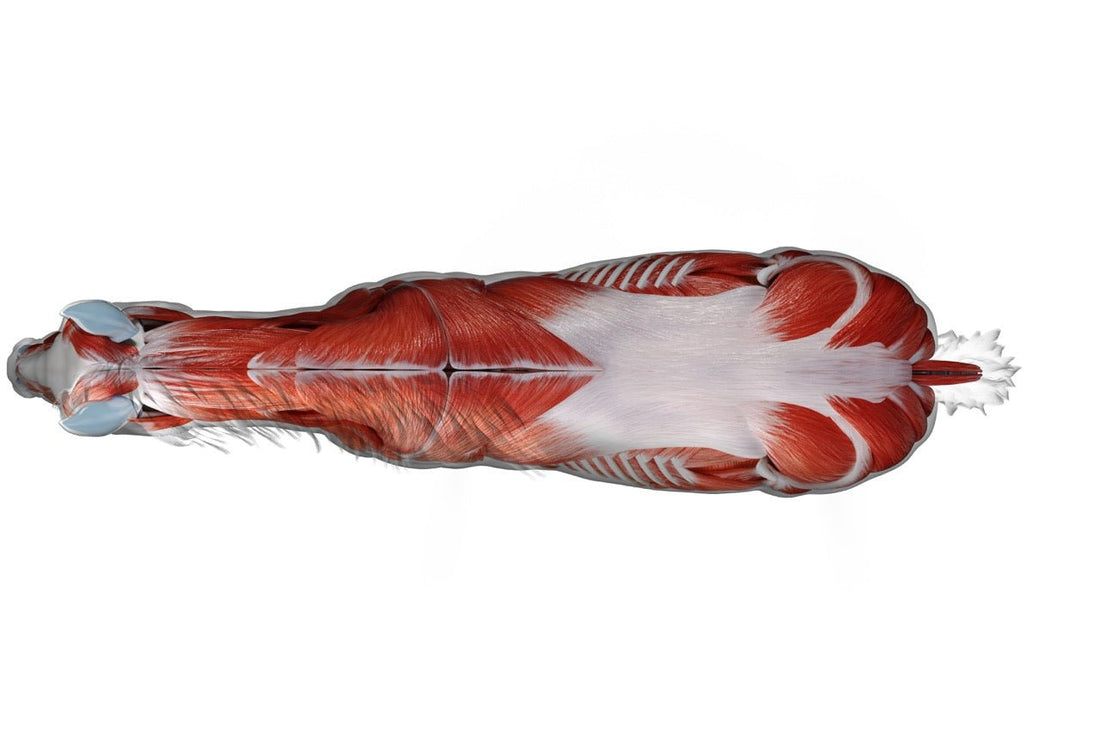
Muscle building in horses: Basics, injury risks and modern support with the BEST-BOX
Guest article by the Esther Weber-Voigt Free Teaching Center ( EWV )
A well-trained horse is not only more efficient, but also healthier and more resilient in everyday life. Targeted muscle development is therefore a central focus in modern horse training – regardless of discipline or performance level. In this article, you will learn about the prerequisites for healthy muscle development, the risks involved in training, and how new technologies, such as the EQUUSIR BEST-BOX for horses, can specifically support this process.

Basic requirements for muscle work
Muscle work in horses is a crucial aspect of the animals' health and performance. To ensure effective muscle work, several basic requirements are necessary:
1. Healthy anatomy
A horse must have well-developed muscles, healthy joints, and proper posture. Regular veterinary examinations are important for early detection of health problems.
2. Nutrition
A balanced diet is crucial to supporting muscle development. High-quality feed containing sufficient protein, vitamins, and minerals promotes muscle growth and recovery.
3. Warm-up
Before each training session, the horse should be warmed up to prevent injury. This can be done by walking slowly or lunging lightly.

Healthy training
1. Variety in training
A varied workout that includes both endurance and strength training is important. Lunging, free jumping, and cross-country rides help activate different muscle groups.
2. Progressive increase
The intensity of training should be increased gradually to avoid overload and injury. It is important to consider the horse's individual abilities and fitness level.
3. Regeneration
Recovery is crucial after intense training sessions. Adequate rest and proper nutrition help repair and strengthen muscles.
4. Observation
The horse's response to training should be continuously monitored. Signs of overload or discomfort should be taken seriously so that timely adjustments can be made.
By observing these basic principles and providing moderate, varied training, a horse's muscle work can be optimized - with positive effects on performance, well-being and lifespan.
Common injuries during muscle building – and how they occur
Despite all precautions, active training always carries a certain risk. The most common injuries in horses during training are:
- Tendon injuries: caused by overload or sudden movements, especially in the flexor tendons.
- Ligament injuries: due to uncontrolled movements, tight turns or uneven surfaces.
- Muscle fiber tears: often due to insufficient warm-up or intense exercise.
- Joint injuries: due to overuse, falls or inadequate preparation.
- Hoof injuries: due to poor hoof care or missteps.
- Bone injuries: such as fractures caused by falls or chronic overuse.
- Wounds & abrasions: caused by obstacles, ground conditions or equipment.
- Mental health: chronic stress or pain can severely impair performance and training.
Prevention is key: warming up, correct equipment, appropriate exercise, veterinary supervision and regular breaks are essential.

Modern support in muscle building: The role of the BEST-BOX from EQUUSIR
How can the combination of horse physiotherapist, trainer and the BEST-BOX create an optimal concept for horse and rider?
The EQUUSIR BEST-BOX offers a completely new way to coordinate training processes, therapy, and long-term performance development. It goes a decisive step further: It analyzes the horse's current condition , documents imbalances— even before symptoms become visible —and provides support through targeted applications at the cellular level.
The analysis as a starting point
Through Vitality Flow Analysis, the BEST-BOX shows how the organism reacts energetically – and where self-regulation may be disrupted. This creates an objective picture of the current state: transparent, comparable, and individually assessable.
Regeneration & Regulation
When used, the BEST-BOX helps the horse achieve a balanced, performance-ready state . This is especially crucial for horses in muscle building – because without a good body awareness, freedom from pain, and sufficient energy supply at the cellular level, training remains inefficient or risky.
The therapy team as key
Physiotherapists, trainers and veterinarians can coordinate their work in a targeted manner thanks to the BEST-BOX. The analysis results serve as the basis for therapy decisions, training plans, and rehabilitation measures. Long-term monitoring enables continuous support and optimization – without guesswork, but based on data.
Conclusion
Muscle building in horses is a complex process that requires patience, expertise, and cooperation. With the right balance of training, nutrition, therapy, and innovative technology like the BEST-BOX, you can not only build healthy muscles but also reduce the risk of injury, promote recovery, and improve the horse's well-being.
Would you like to know whether the BEST-BOX fits into your stable concept?
Get in touch – we will advise you personally and help you develop a holistic concept for your horse.




